On Monday morning May 8, 2023, we left Moab for a long drive to St. George, Utah. We planned a few extra days there to visit our niece and her partner and check out the area before a couple back-to-back driving days.
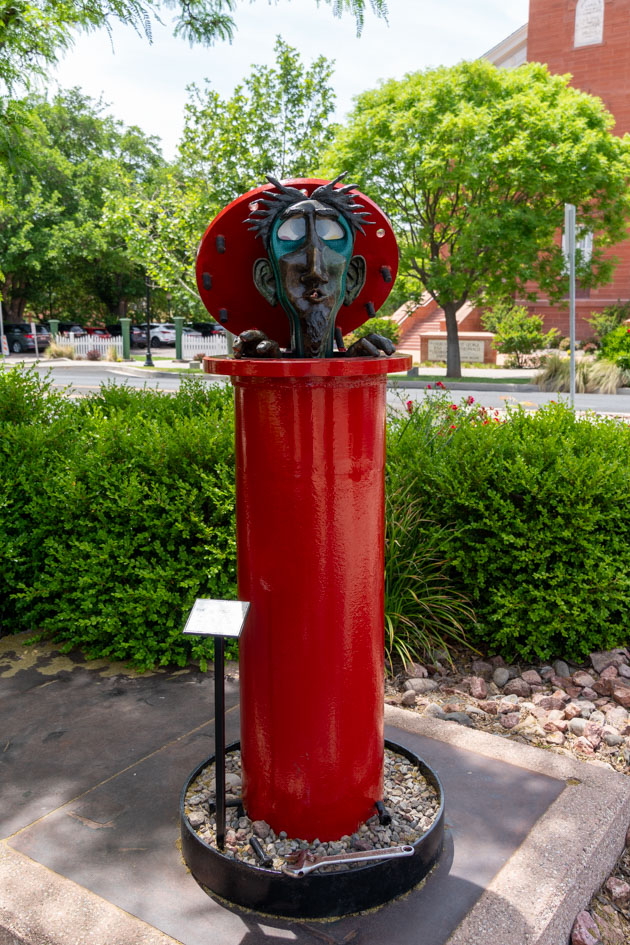
St. George City
Had we known St. George possessed a rich array of art in the city, we would have stopped before on one of our trips along Interstate 15. Murals grace sides of buildings, sculptures stand center stage in the middle of roundabouts, and bronze statues and other art pieces pop up on sidewalks.
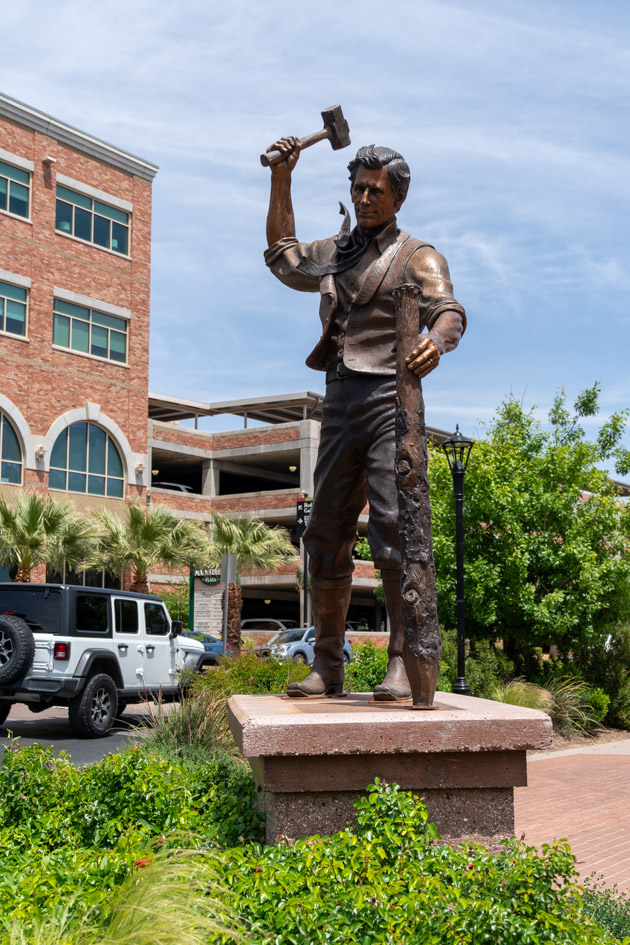
Athletics are another attraction in St. George with a Triathlon in April and the North American Ironman 70.3 Championship Qualifying event in May. Whether outdoor enthusiasts prefer hiking, biking, walking, or running they are sure to find a trail to satisfy their wants and needs among 23 trails covering 62 miles around the city.
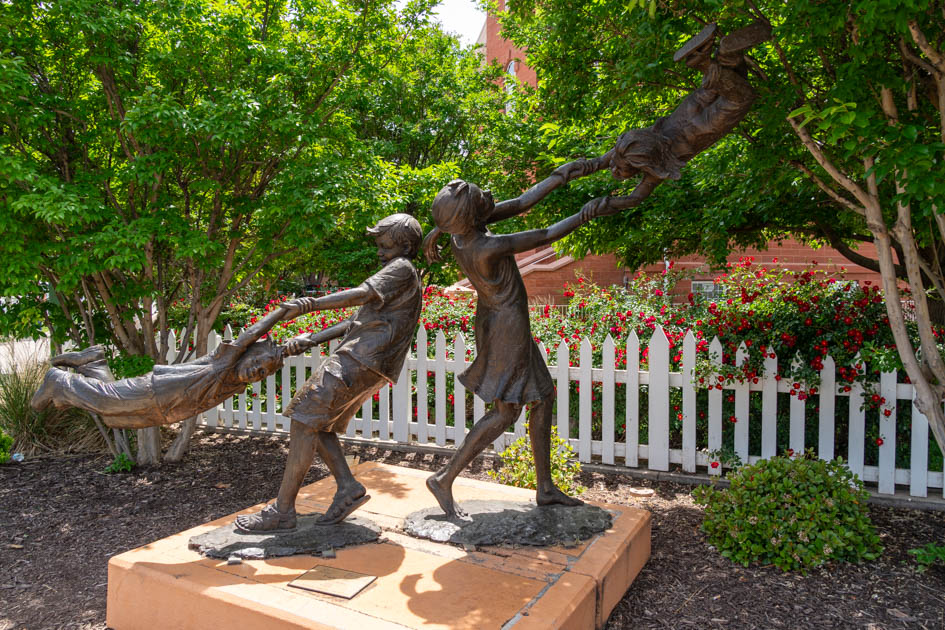
Morman families settled the area in 1861 to raise cotton. While the cotton crops never became an important commodity, the communities consisting of farmers, masons, blacksmiths, businessmen, and men in other occupations continued to thrive and grow.
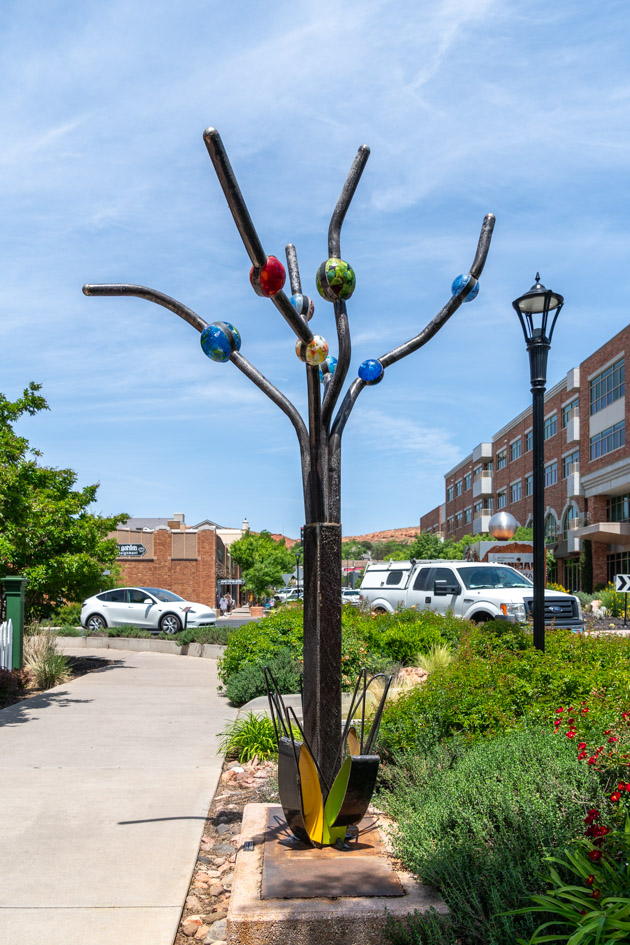
Elder Erastus Fairbanks Snow served as the president over the Cotton Mission from 1861 to 1888. He also supervised the construction of the St. George Tabernacle and the St. George Temple at the same time.
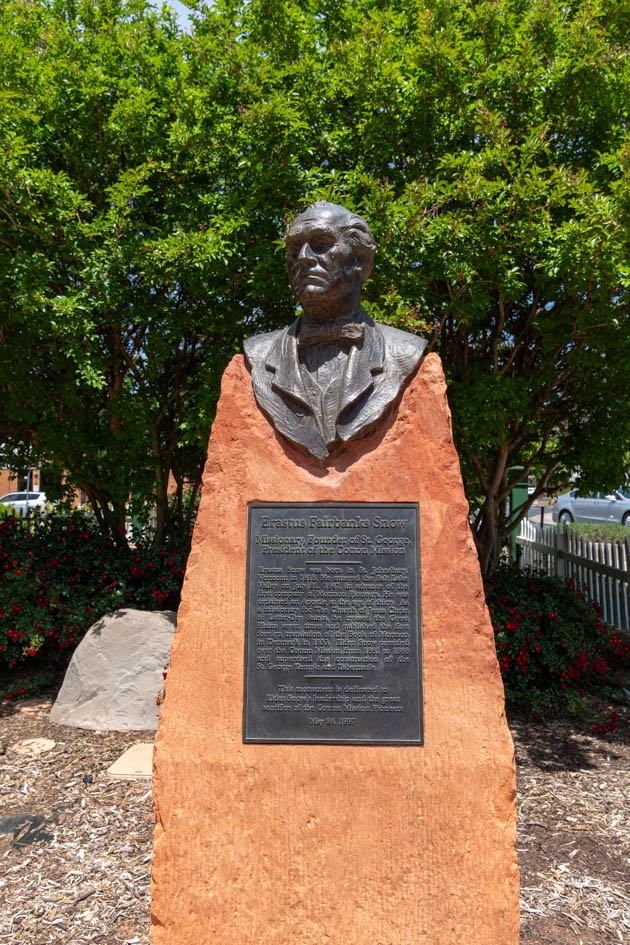
A couple invited us into the tabernacle and told us about the history of the building and the recent renovations made during 2016 to 2018. The renovations updated the structure and returned the interior and exterior to represent its 19th century appearance.

While collecting my resources on the history of the tabernacle, I noticed a discrepancy in dates. One source stated, “a place for community gatherings since 1869—before its completion in 1876.” Yet a plaque below the clock tower and steeple claims, “Holiness to the Lord Commenced A.D. 1863 Completed A.D. 1871.” What was correct?
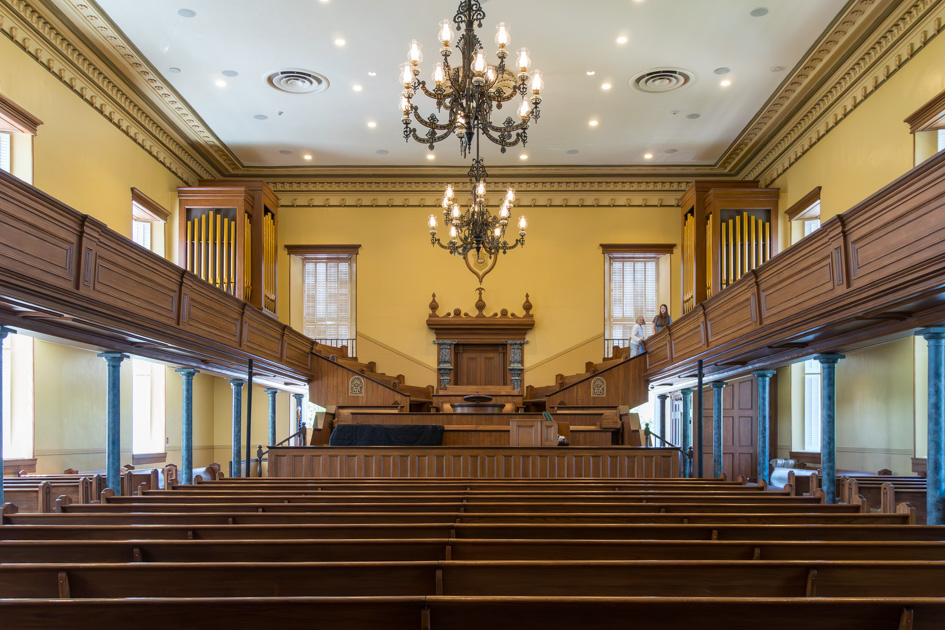
The construction timeline in another resource showed the first cornerstone laid on June 1, 1863, the limestone foundation completed on July 30, 1865. The timeline further states last stone laid on December 29, 1871 and the last roof shingle placed the following day dates consistent with the plaque.
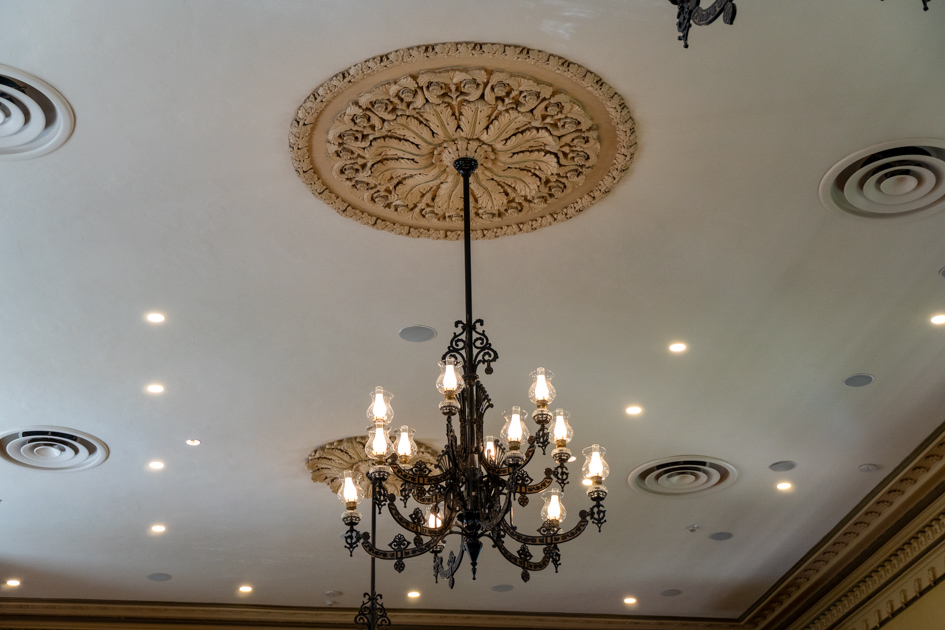
So, was it completed in 1876 or 1871? The timeline continued and finally I found the missing piece to the puzzle. Although the exterior of the building was completed in 1871, it took almost five more years to complete the interior work before Brigham Young Junior dedicated the building on May 14, 1876. Whew! Mystery solved. It shouldn’t have been so hard to find the pieces that fit. I must be losing my sleuthing skills.
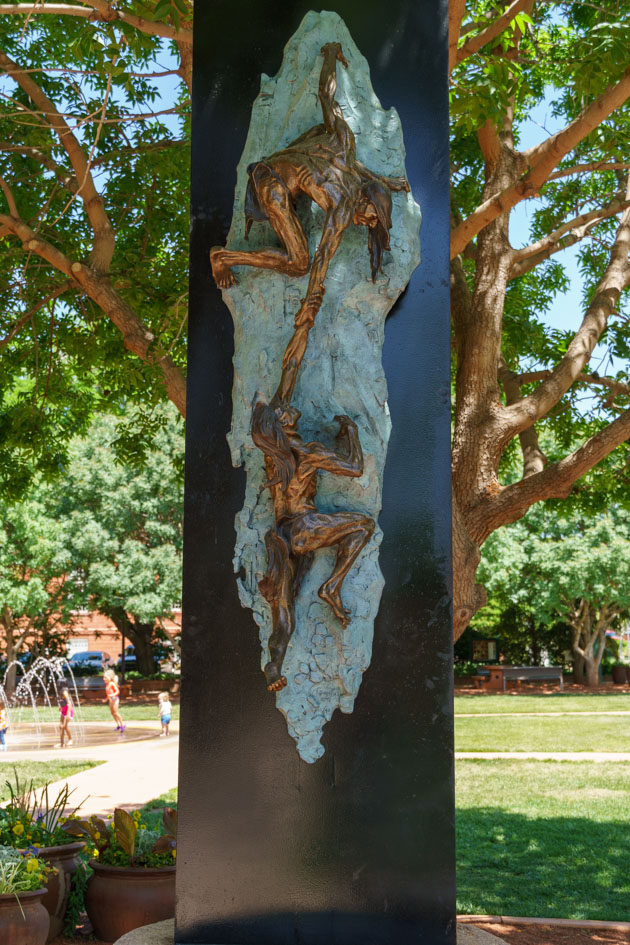
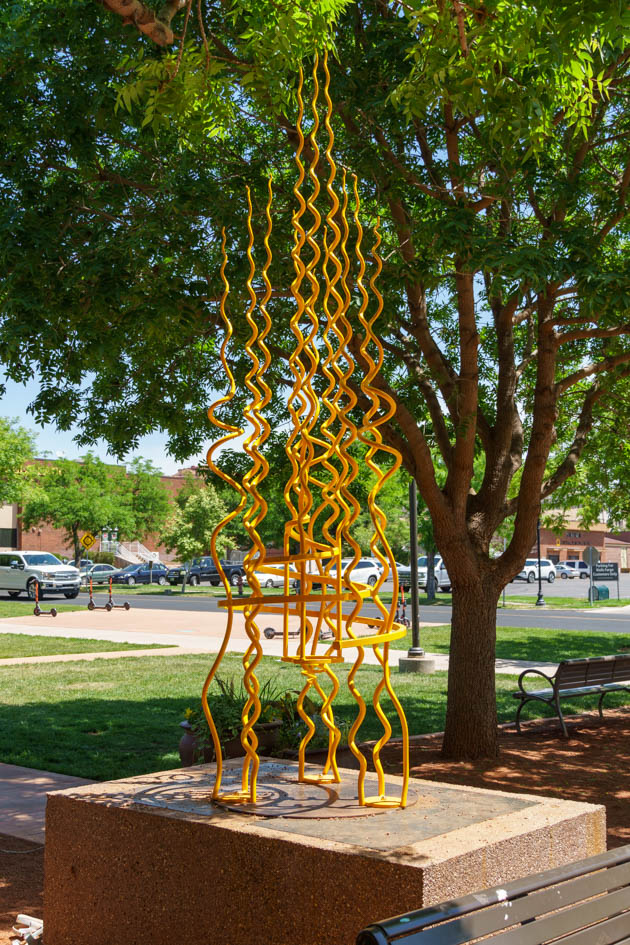
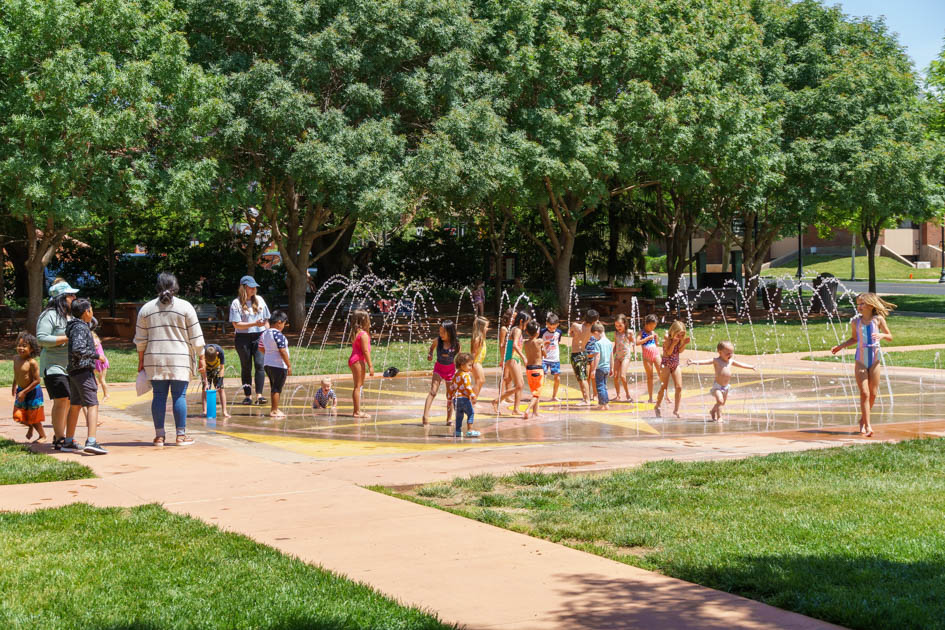

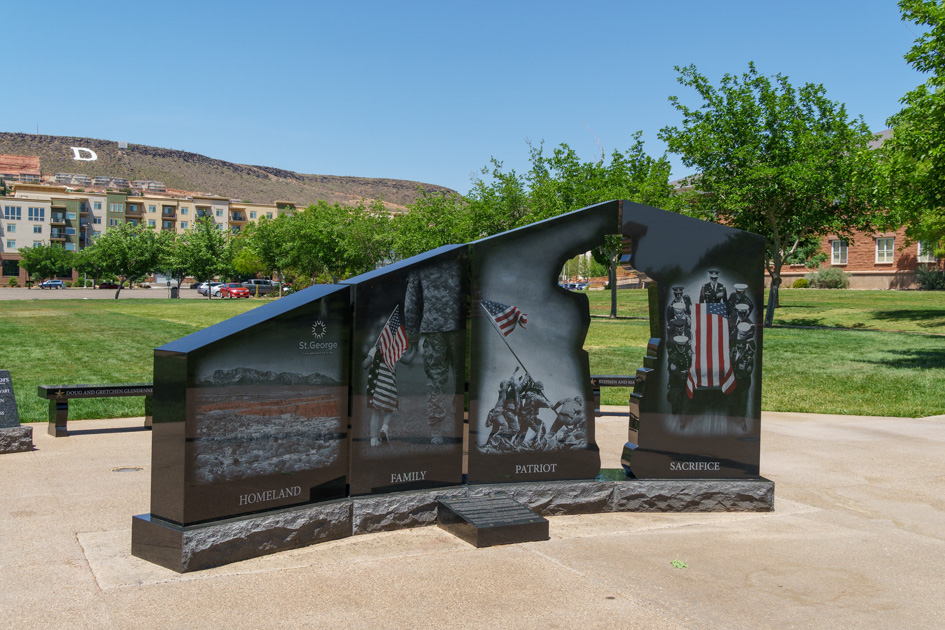
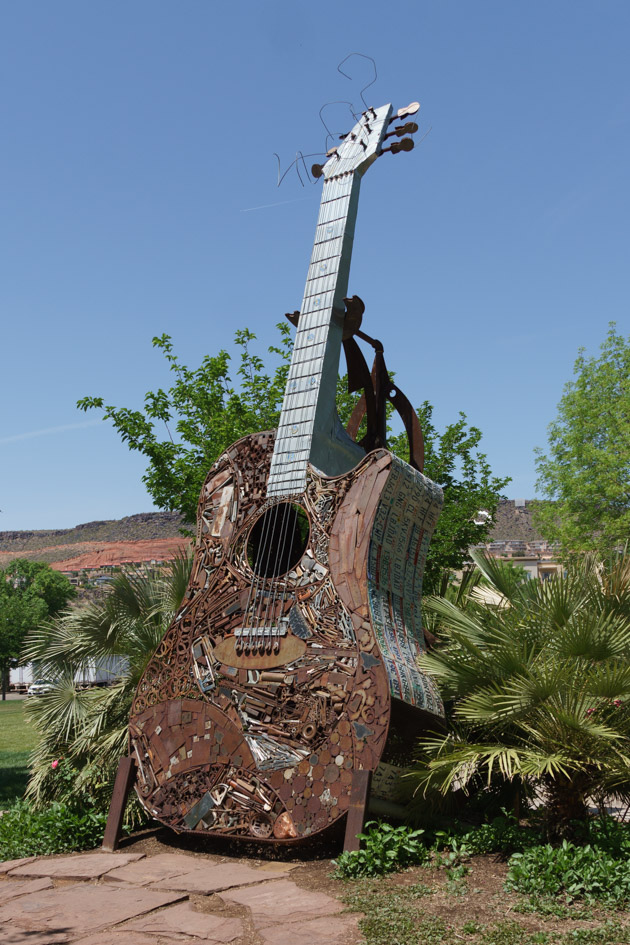
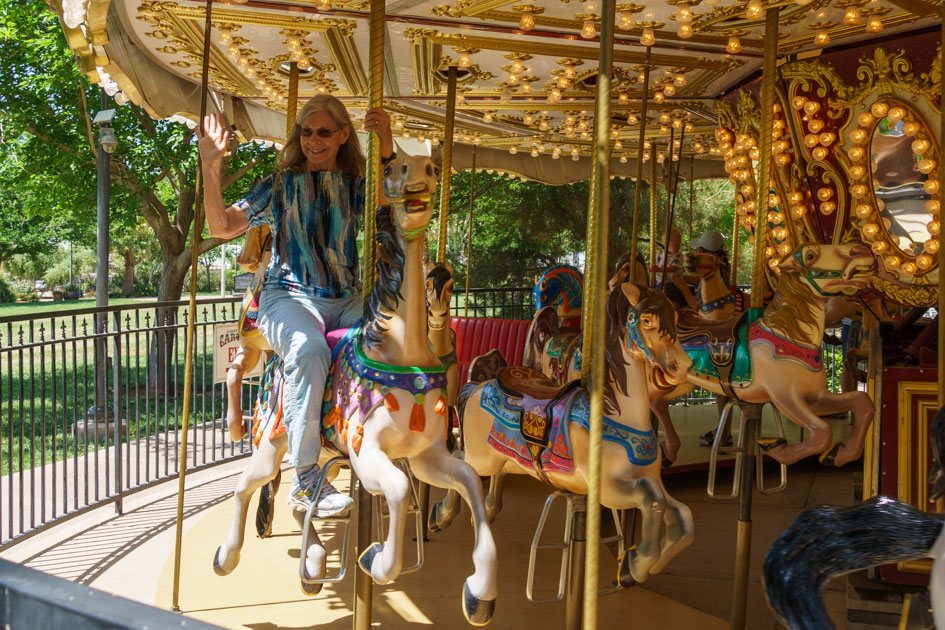
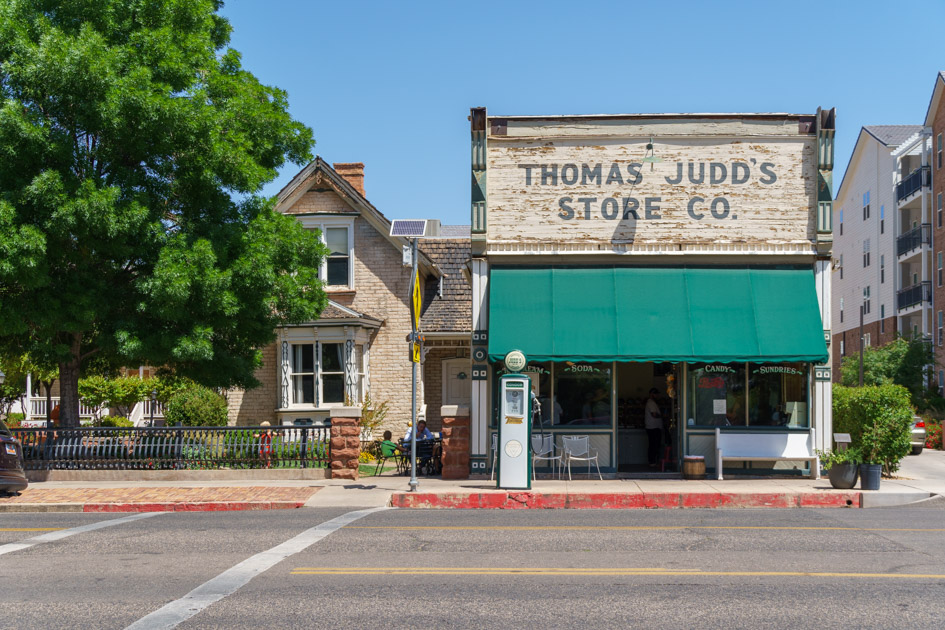
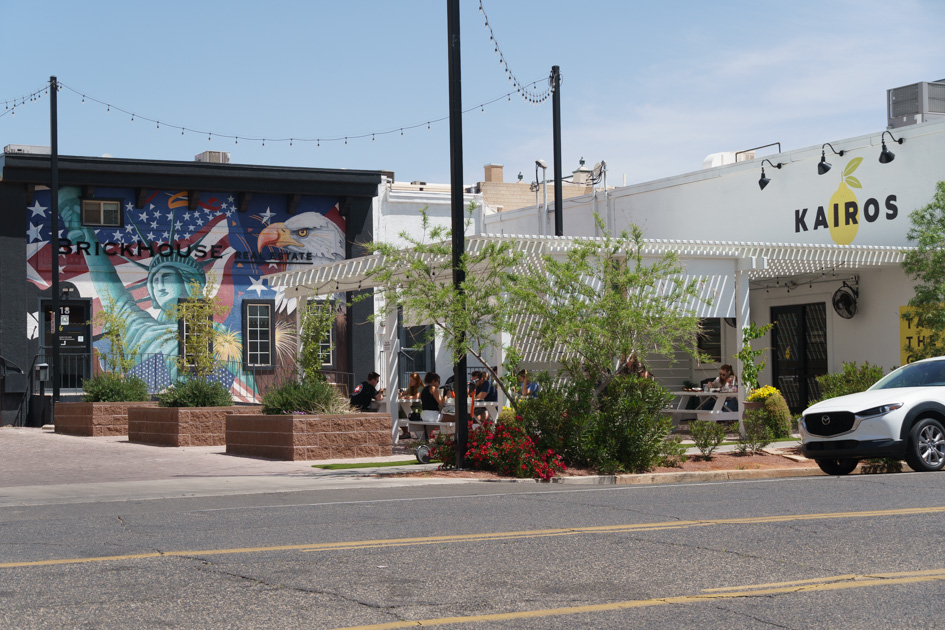
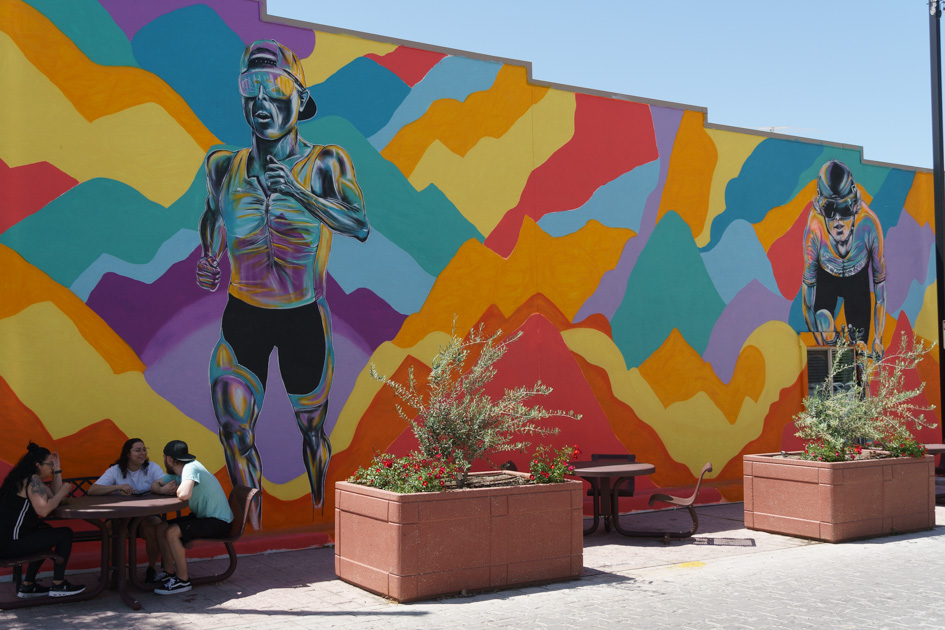
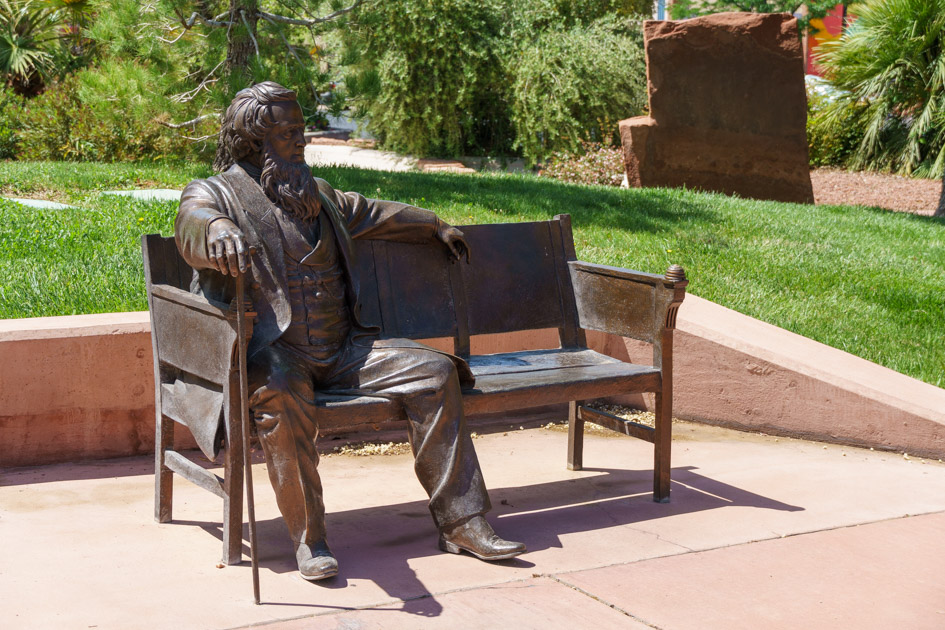
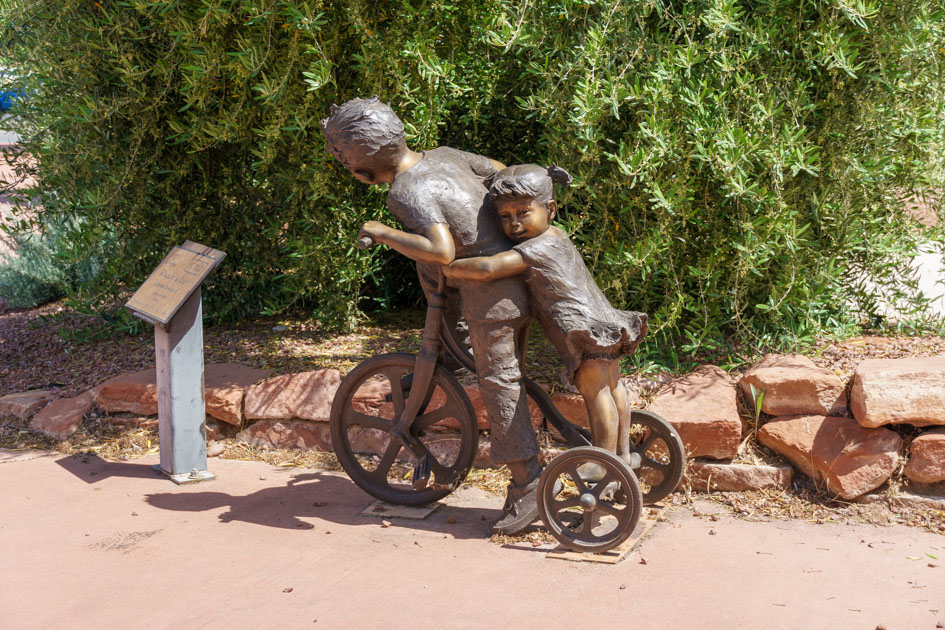
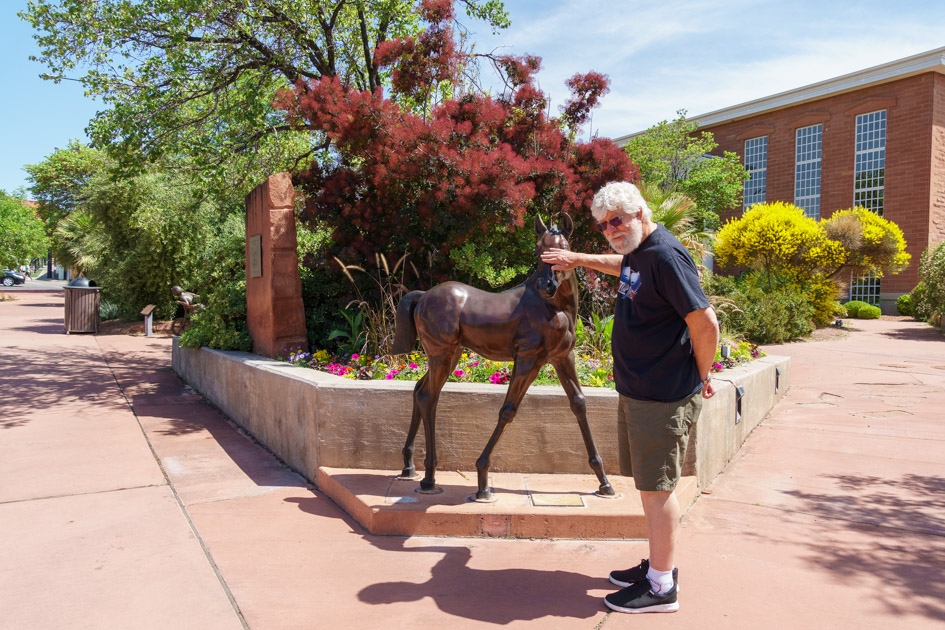
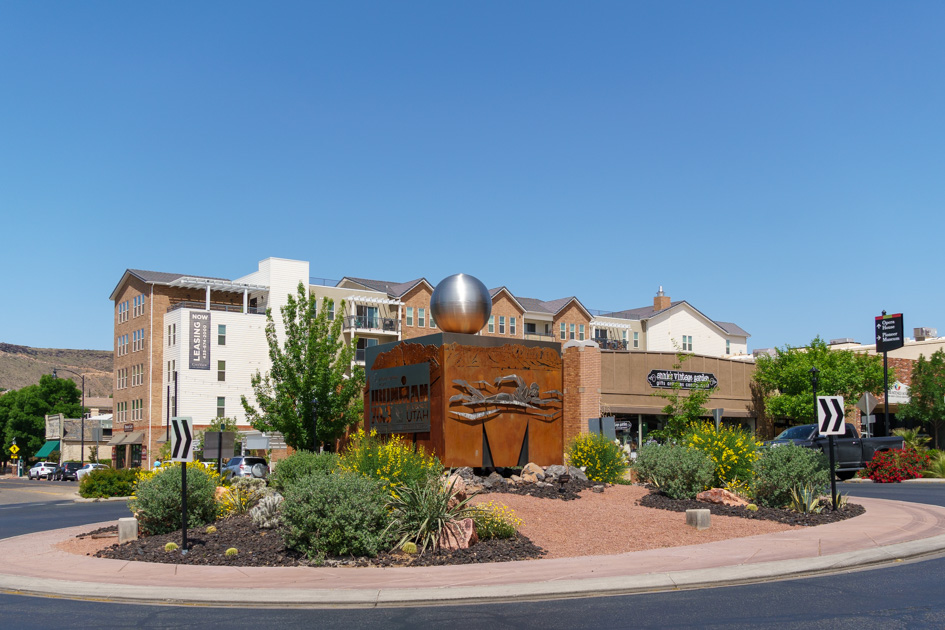
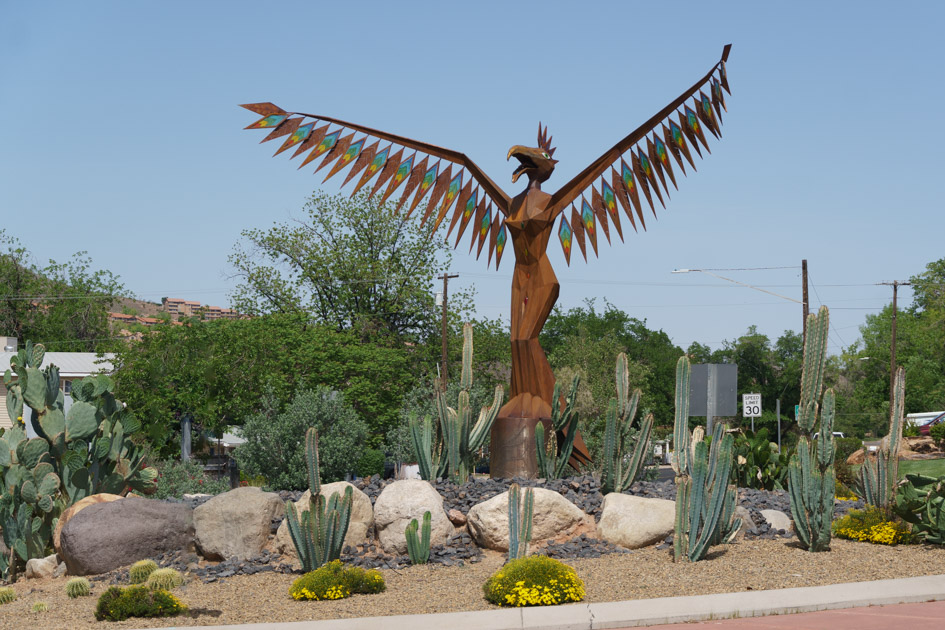
Snow Canyon State Park
Our niece Denice and her partner John took us on a short hike in Snow Canyon State Park. Like much of the land in Utah, artifacts reveal human activity in the park dating back to 500 B.C. way before the 19th-century settlers.
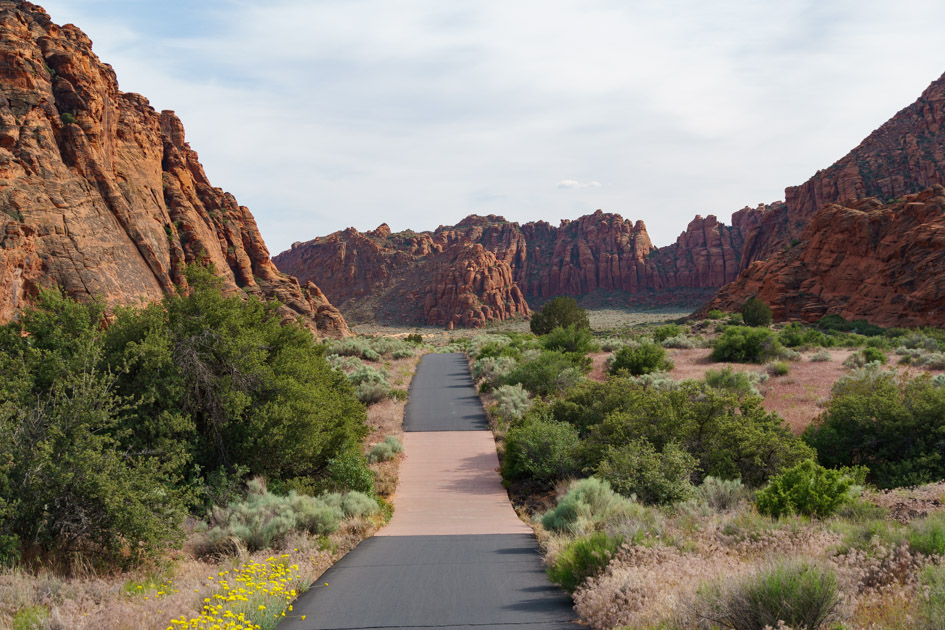
Hmmm, Snow. Was the park named after Elder Snow who we met at the tabernacle? Yes indeed, according to the park pamphlet.
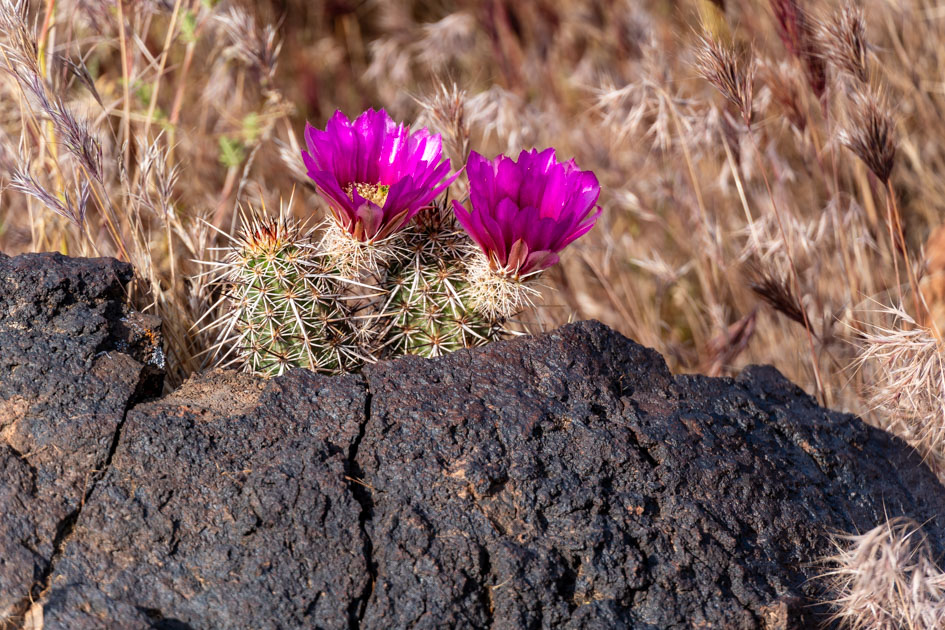
Visitors will find rolling petrified dunes, red and white sandstone cliffs among the shiny black of lava flows. Activities include hiking, climbing, canyoneering, biking, equestrian, and camping. I counted 22 hiking trails ranging from easy to difficult with distances from 0.5 mile to 16 miles.

John and Denice had recently moved into the house in the photos below. I was impressed at how the home integrated with the surrounding landscape as if it had invited the outside inside.
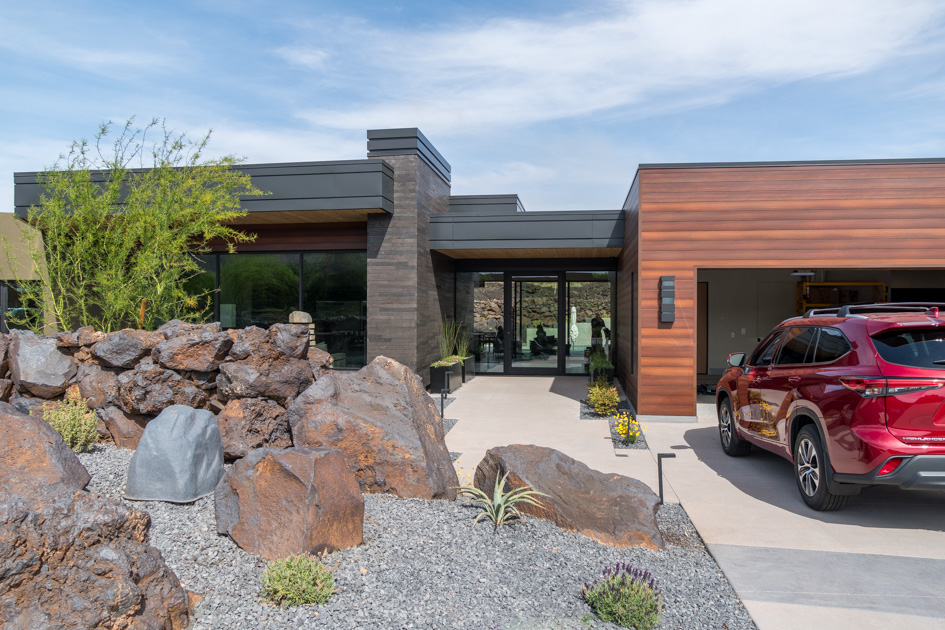
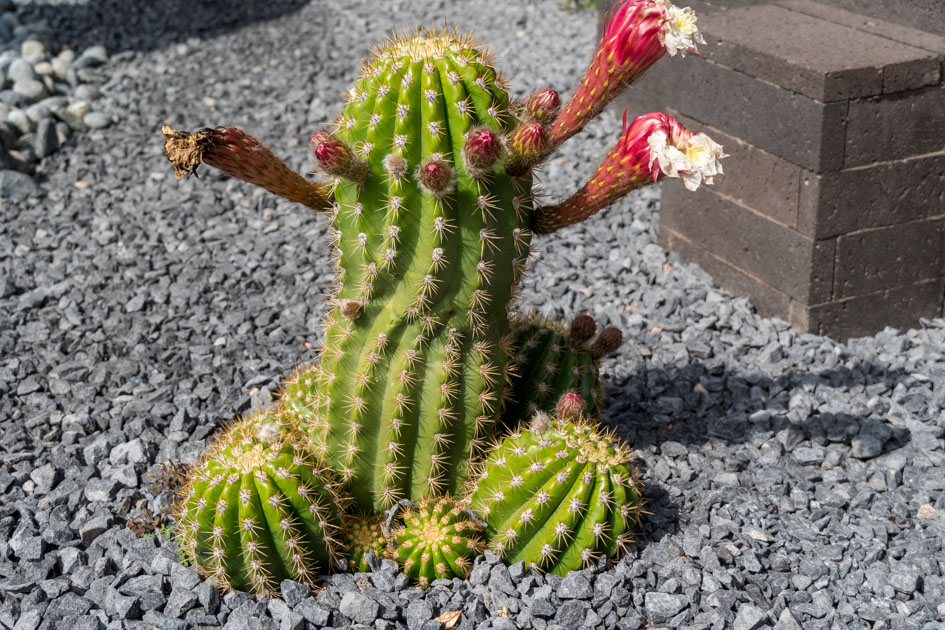
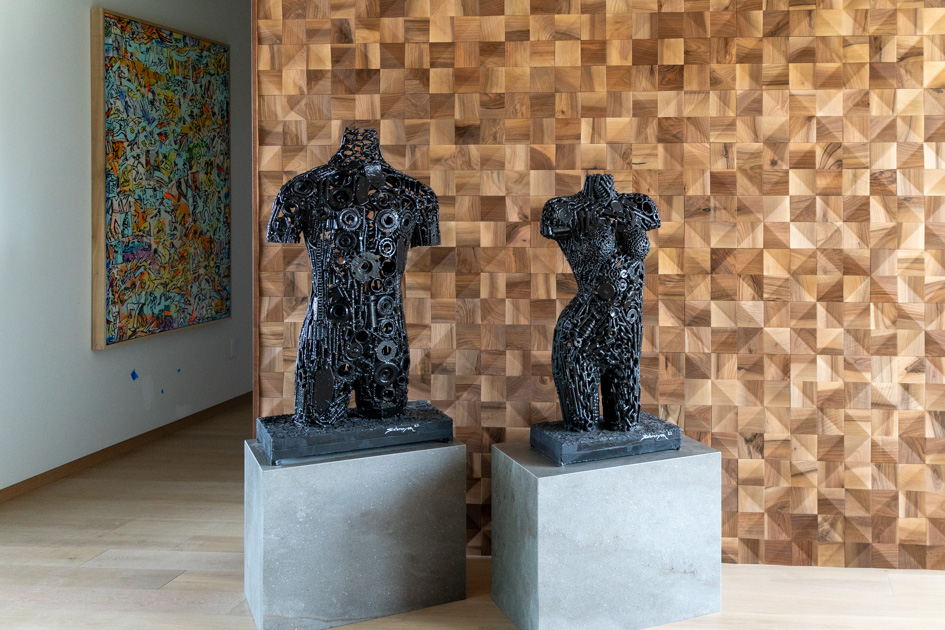


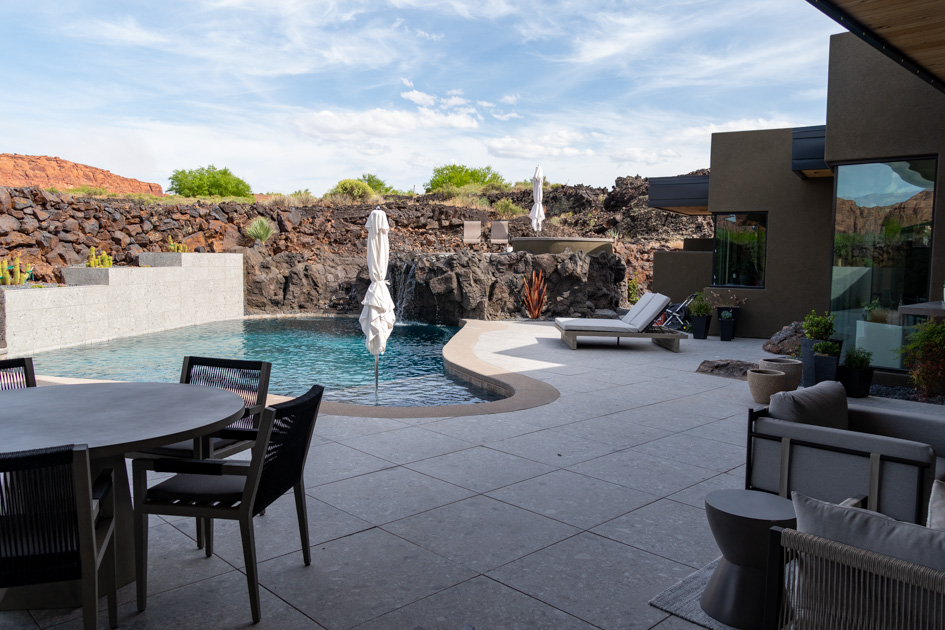
So, what was our assessment of the St. George area? It was a great place to stop and spend time. There are other things we could have done had we planned to do so such as: explore more of Snow Canyon State Park, visit Sand Hollow State Park, check out the Gila monster in The Red Cliffs Desert Reserve, paddle board in Ivins Reservoir, and take in more of the city offerings.
On May 11, 2023, we left St. George and Utah behind as we continued west. We crisscrossed the Virgin River a few times as we drove through the red rock canyon until, bam! As if someone pulled the stage curtain to reveal a desert backdrop. We continued on Interstate 15 through Las Vegas until we arrived at the Barstow KOA to rest for the night. The next day we slid into the Lost Hills KOA, and then on to the Bay Area and home.
Wrap Up
Over two months and eighteen episodes, we incurred a broken trailer axle, spent time with family, and visited four presidential museums or historic sites, two railways, an heirloom seed company, gardens, lakes, nuclear museum, caverns, a national park, and much more.
Thanks to everyone who came along for the ride. We appreciate the dear readers who take time from their busy days to read about our adventures.
It’s always good to pull up in front of the house after a long trip and after this one, it was especially gratifying to go behind the house to see how our four-month-old plants fared while we were gone. We were pleased to see they had not suffered from our absence, thanks to the drip irrigation system Jon controls with a phone app.

Next up: We sleep in a tent cabin and go on safari.
Safe Travels



































































